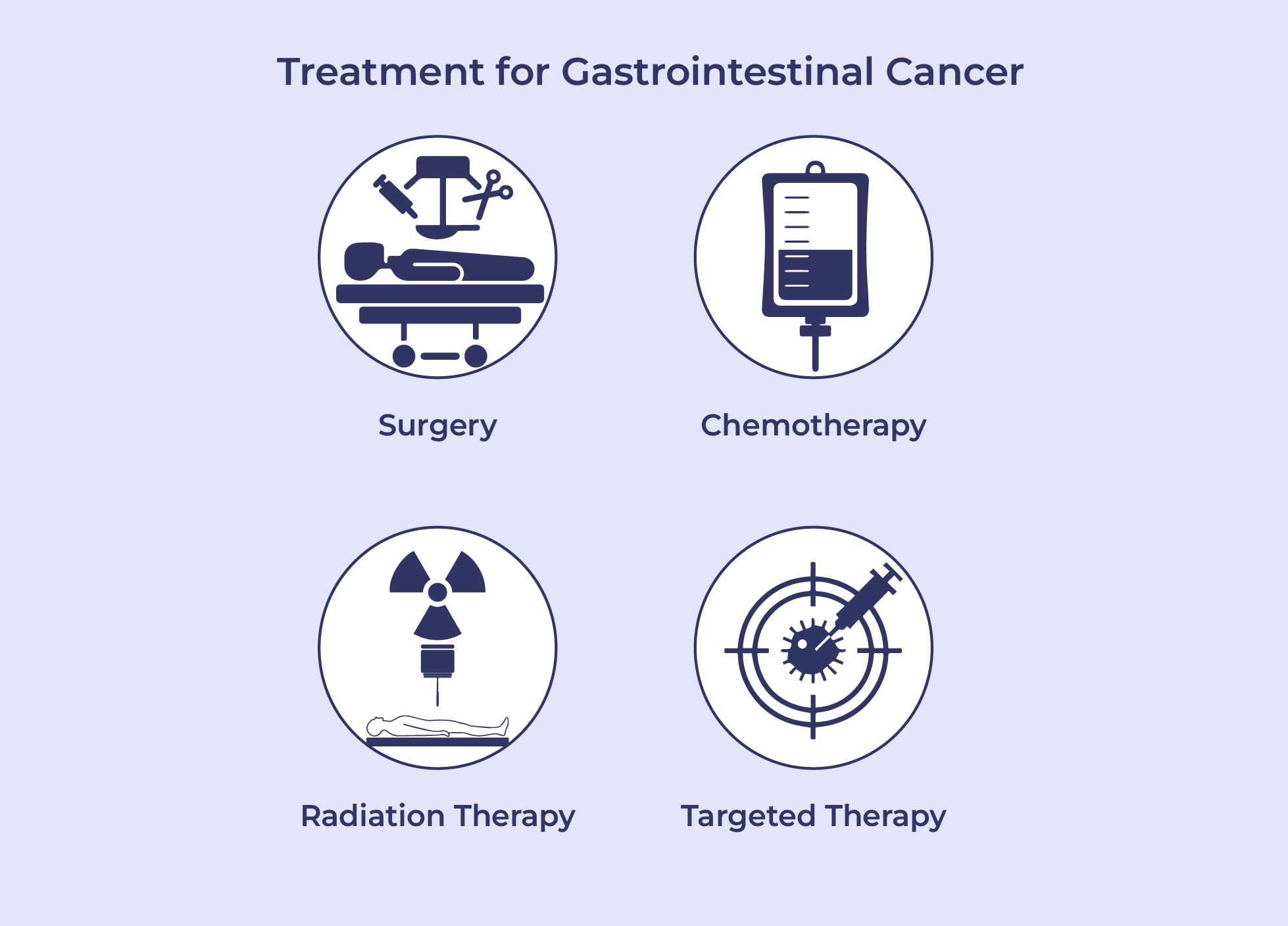Gastrointestinal Cancer
- The 25 foot long gastrointestinal (GI) tract
runs from the mouth to the
anus. Everything you consume goes via the esophagus and then breaks
down to extract nutrients in the stomach and small intestine. In the end,
the colon and rectum are responsible for eliminating waste from your
body.
When a mutation in the DNA occurs, the abnormal growth of cells is observed which may result into an occasional growth of tumor in any one of these organs. Anything from underlying diseases to lifestyle decisions to genetics could be the cause.
Gastrointestinal cancer is a frequent disease. Early Cancer detection, which sometimes is sadly difficult and crucial for effective treatment. Dr. Sanjay Sharma, the best gastrointestinal cancer doctor in Mumbai,is an expert in this field of study and can assist in early detection as well as efficient treatment.
Symptoms
- There might be no visible symptoms in the early
stages of GI cancer.
Additionally, it is quite difficult to fell GI tumors as they grow.
As a result, examinations for GI malignancies frequently detect the disease before any symptoms appear. Or they are discovered after they have progressed to the point where they are causing symptoms at a more severe level.
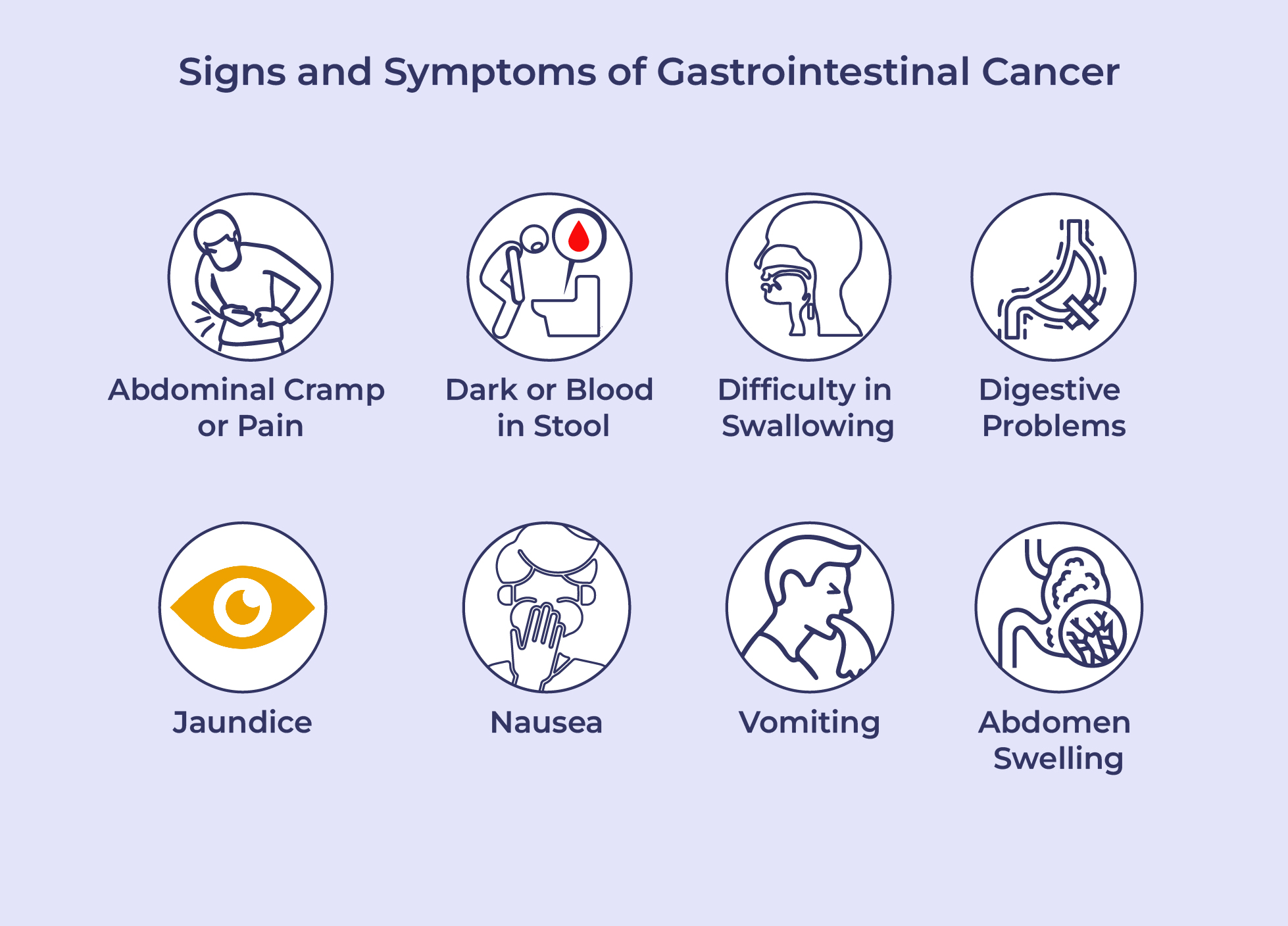
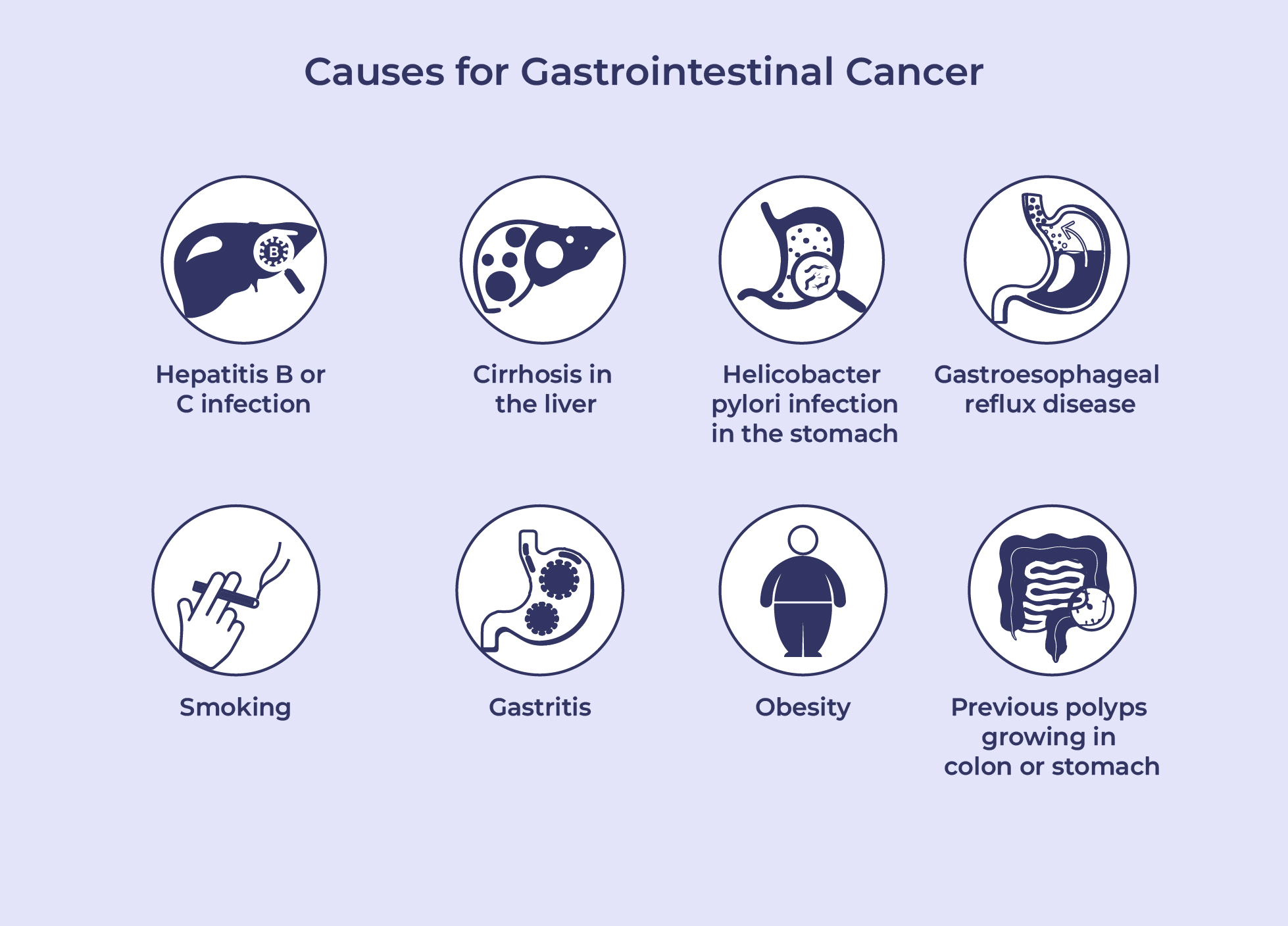
Causes
- When the cells lining one or more of the digestive tract’s organs mutate and start to grow, tumors are produced and the tumors can occasionally migrate to the lymph nodes and other organs.
The exact cause of GI cancer is still unclear to medical professionals. However, cell damage which can result from infections, obesity, smoking and some environmental risk factors, increases the likelihood that abnormalities will emerge.
Types of Gastrointestinal cancer and the risk factors
The most common types of gastrointestinal cancers are as follows:
- Esophageal cancer:It is a cancer that occurs in the tissues of esophagus, a long muscular tube that moves from your throat to your stomach.
- Gastric (stomach) cancer:The growth of cancer cells is observed in the inner lining of your stomach. As the cancer progresses, they then penetrate your stomach walls further.
- Colorectal cancer:Colorectal cancer consists of both the cancers of colon as well as rectum, depending on their origin.
- Pancreatic cancer:When the pancreas cells undergo mutations, the uncontrolled growth of those cells results in pancreatic cancer. The tissue might become a bulk. This tumor may occasionally be benign. However, the mass in pancreatic cancer is malignant.
- Liver cancer: One of the cancer forms with the quickest rate of growth. The two types of liver cancers are Primary and Secondary liver cancers. Liver is the site of primary cancer.
- Other types, which are less common are: Neuroendocrine tumors, gastrointestinal stromal tumors and anal cancer.
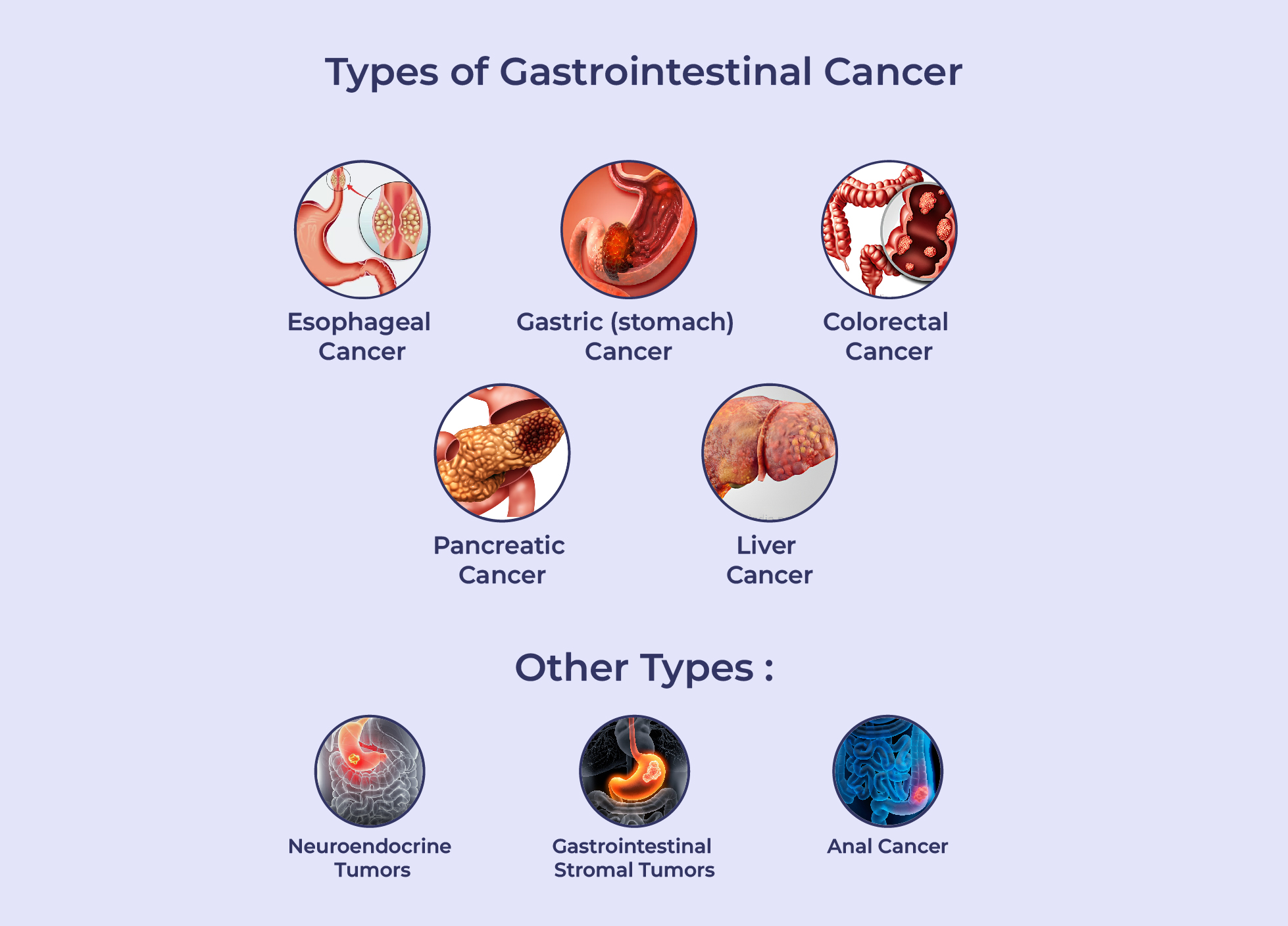
- Men are more likely to get gastrointestinal cancers than women and the risk rises with age. These malignancies have been connected in studies to alcoholism, cigarette smoking and poor diets.
- Additionally, specific underlying diseases can cause tumor. These can be:
- Hepatitis B or C infection
- Cirrhosis in the liver
- Helicobacter pylori infection in the stomach
- Gastroesophageal reflux disease
- Smoking
- Gastritis
- Obesity
- Previous polyps growing in colon or stomach
- Only a small portion of gastrointestinal cancers are hereditary.
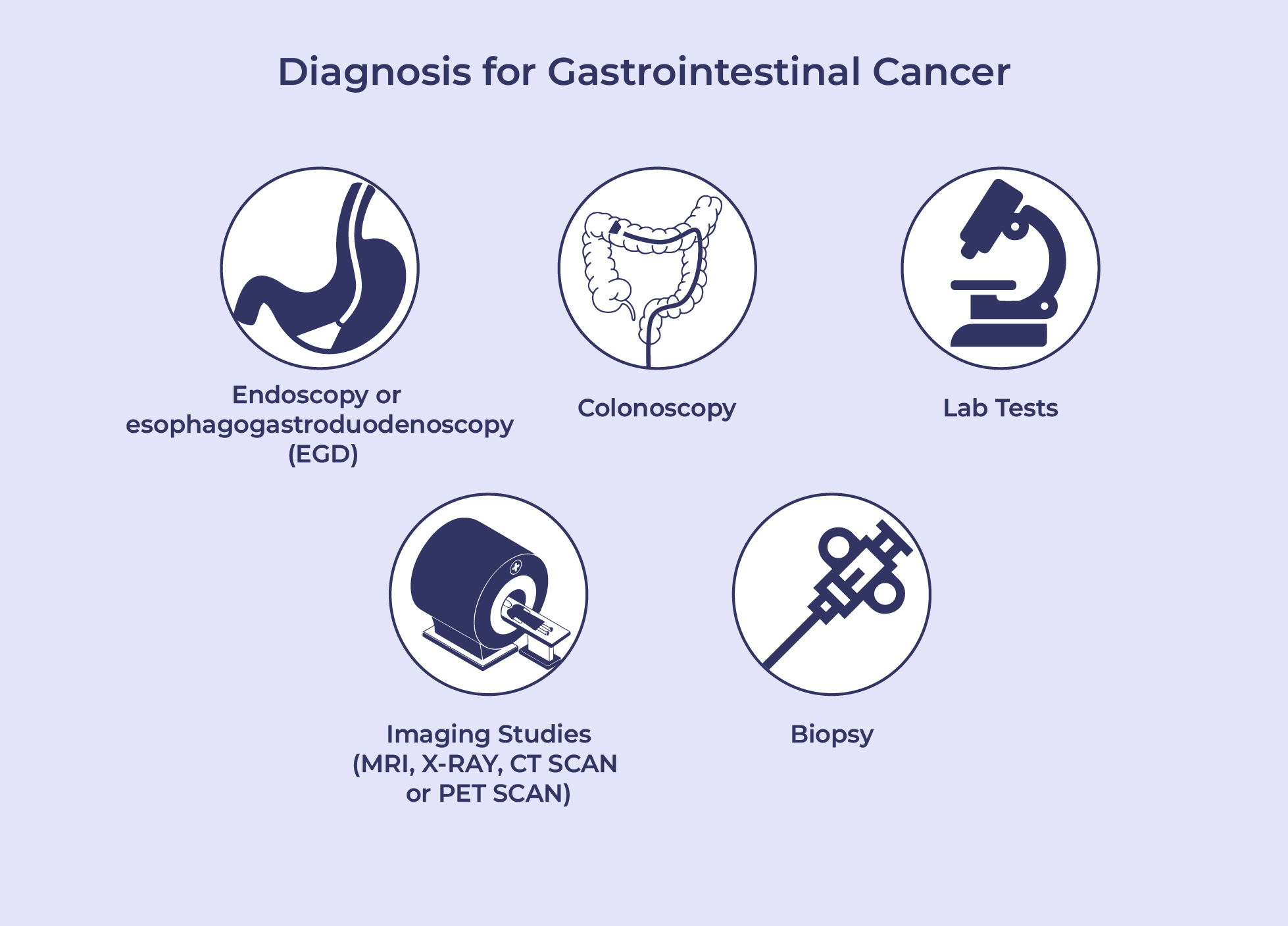
Diagnosis
- Appearance of any kind of symptoms that might indicate the presence of gastrointestinal cancer can be confirmed by performing following tests: -
- Endoscopy or esophagogastroduodenoscopy (EGD):This is helpful in checking the lining of the esophagus, stomach and small intestine for tumors.
- Colonoscopy:To check for polyps in colon and rectum that can develop into cancer.
- Lab Tests:Change in any blood related components that could be signs of cancer
- Imaging Studies (MRI, X-RAY, CT SCAN or PET SCAN):Check the presence of any abnormal tissue growth in the GI tract. Performing an endoscopic ultrasound (EUS) might be necessary. This procedure consists of a thin tube connected with a light, camera and ultrasound probe, which is inserted into the patient’s mouth, down their throat and into the stomach. Emission of sound waves through the probe, produces an image of the tissues of the stomach and surrounding tissues.
- Biopsy:A biopsy is done to procure a sample of abnormal tissue and then analyzing it for the presence of cancer cells. Collection of samples is usually done during an endoscopy. The procured sample is then examined by the pathologists under a microscope to check for the presence of cancer.
Treatment
- Surgery is considered as the best option when the tumor is accessible.
- Chemotherapy, radiation therapy or targeted therapy can be also be used first when it is more difficult to treat or when removal would adversely affect gastrointestinal function. Targeted treatment (specific to components of cancer cells) or immunotherapy (drugs that restrict or activate the patient’s immune system to help it more effectively fight cancer) may be used to treat several forms of gastrointestinal tumors.
- Entire tumor along with the nearby tissues is removed during the surgery. A surgery termed anastomosis may be used to join the remaining healthy sections of the esophagus in order to restore the function. Some patients with liver cancer might be candidates for transplantation
- Gastrointestinal cancer specialist in Mumbai, Dr. Sanjay Sharma with his experience may choose to treat symptoms rather than the actual disease in cases of extremely advanced gastrointestinal cancer that cannot be properly treated.
